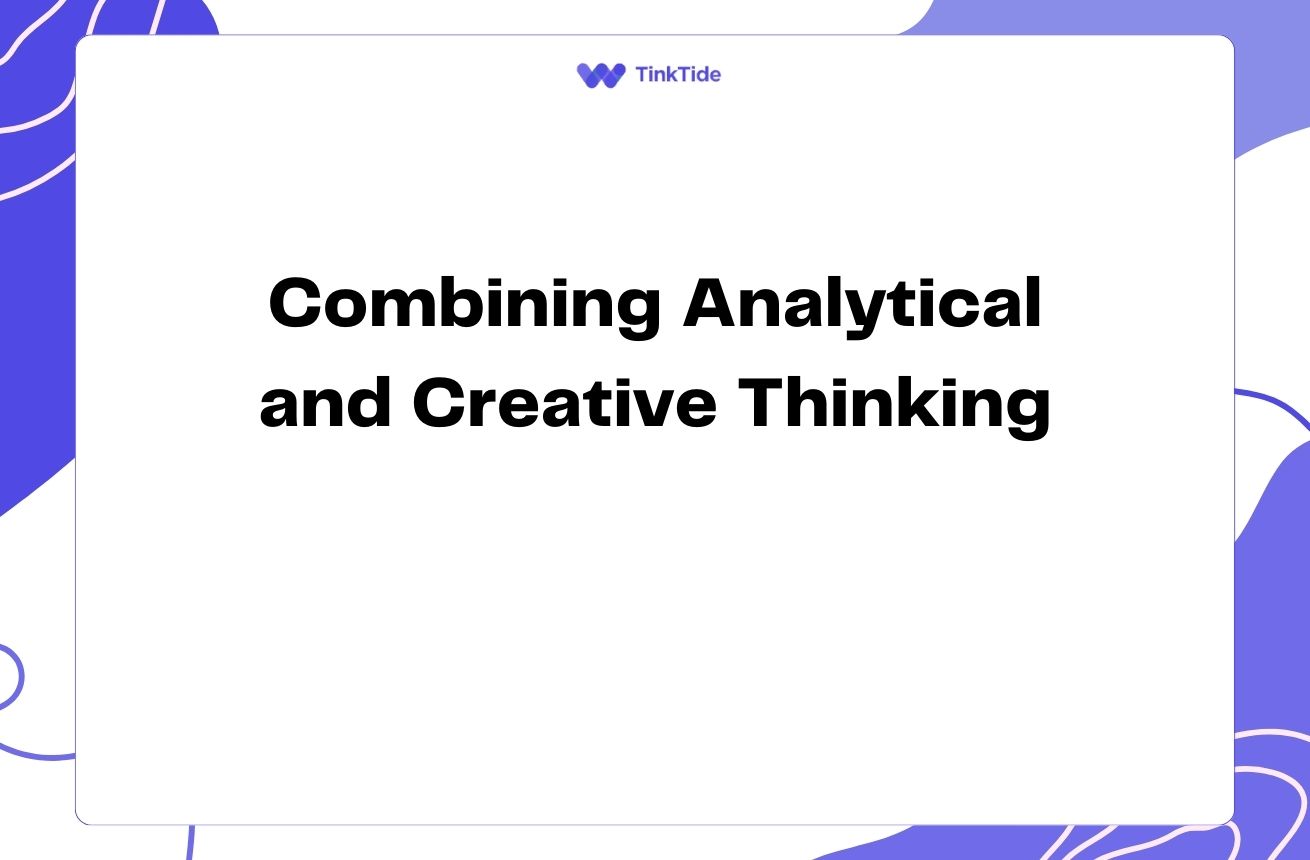Unlock Innovative Solutions: Effective Brainstorming Methods
The Power of Effective Brainstorming
Brainstorming is a crucial skill in today's fast-paced, innovation-driven world. It's the process of generating creative ideas to solve problems or explore new opportunities. When done effectively, brainstorming can unlock innovative solutions that drive personal growth and business success.
However, not all brainstorming sessions are created equal. To truly harness the power of collective creativity, you need to employ proven techniques that encourage free thinking and collaboration. In this article, we'll explore some of the most effective brainstorming methods to help you and your team generate groundbreaking ideas.
By mastering these techniques, you'll be better equipped to tackle complex challenges, spark innovation, and drive meaningful change in your personal and professional life. Let's dive into the world of effective brainstorming and unlock your creative potential.
Setting the Stage for Successful Brainstorming
Before we explore specific brainstorming techniques, it's essential to create an environment conducive to creative thinking. Here are some key elements to consider:
- Create a judgment-free zone where all ideas are welcome
- Encourage diverse perspectives and backgrounds
- Set clear objectives and time limits for the session
- Provide necessary tools and resources (e.g., whiteboards, sticky notes)
- Ensure all participants are comfortable and engaged
Classic Brainstorming: The Foundation
Classic brainstorming, developed by Alex Osborn in the 1940s, remains a cornerstone of idea generation. This method involves gathering a group of people to freely share ideas without judgment or criticism. The key principle is quantity over quality – the more ideas generated, the higher the likelihood of finding innovative solutions.
To implement classic brainstorming effectively, follow these steps:
- Clearly define the problem or challenge
- Encourage all participants to share ideas, no matter how wild or unconventional
- Record all ideas without evaluation or discussion
- Build upon others' ideas to create new concepts
- After the session, review and evaluate the ideas generated
While simple, this method can be incredibly powerful when executed correctly. It's particularly useful for generating a large number of ideas quickly and encouraging team participation.
Mind Mapping: Visual Idea Generation
Mind mapping is a visual brainstorming technique that helps organize thoughts and explore connections between ideas. This method, popularized by Tony Buzan, is especially useful for visual thinkers and can lead to unexpected insights.
To create a mind map:
- Write the central topic or problem in the center of a large sheet of paper
- Draw branches from the center, each representing a main idea or category
- Add sub-branches to explore related concepts and details
- Use colors, symbols, and images to enhance visual connections
- Continue expanding the map as new ideas emerge
Mind mapping can be done individually or as a group exercise. It's particularly effective for exploring complex topics, organizing information, and identifying patterns or relationships between ideas.
The Six Thinking Hats: Structured Brainstorming
Developed by Edward de Bono, the Six Thinking Hats method provides a structured approach to brainstorming. This technique encourages participants to look at a problem from different perspectives, leading to more comprehensive solutions.
Each 'hat' represents a different mode of thinking:
- White Hat: Focus on available data and information
- Red Hat: Express emotions and intuitions about the problem
- Black Hat: Identify potential risks and challenges
- Yellow Hat: Explore optimistic viewpoints and opportunities
- Green Hat: Generate creative ideas and alternative solutions
- Blue Hat: Manage the thinking process and draw conclusions
By 'wearing' each hat in turn, participants can approach the problem from multiple angles, leading to a more balanced and thorough exploration of the issue at hand.
SCAMPER: Transforming Existing Ideas
SCAMPER is an acronym-based brainstorming technique that helps transform existing ideas or products into new solutions. This method is particularly useful when you're looking to improve or innovate on something that already exists.
The SCAMPER acronym stands for:
- Substitute: Replace a part of the product or idea with something else
- Combine: Merge two or more elements to create something new
- Adapt: Modify the idea to suit a different context or purpose
- Modify: Change an attribute of the product or idea (e.g., size, shape)
- Put to another use: Find new ways to use the existing product or idea
- Eliminate: Remove elements to simplify or streamline the concept
- Reverse/Rearrange: Change the order or perspective of the idea
By systematically applying these prompts, you can generate creative variations and improvements on existing concepts, leading to innovative solutions.
Brainwriting: Silent Idea Generation
Brainwriting is a silent brainstorming technique that can be particularly effective for introverted team members or when dealing with sensitive topics. This method allows participants to generate ideas independently before sharing them with the group.
Here's how to conduct a brainwriting session:
- Provide each participant with a sheet of paper or digital document
- Present the problem or challenge to the group
- Give participants 5-10 minutes to write down their ideas silently
- Pass the sheets to the next person, who then builds on or adds new ideas
- Repeat the process for several rounds
- Collect all sheets and discuss the ideas as a group
Brainwriting can lead to a more diverse range of ideas and ensures that all participants have an equal opportunity to contribute, regardless of their comfort level with verbal communication.
Implementing Effective Brainstorming in Your Workflow
To make the most of these brainstorming techniques, consider integrating them into your regular workflow. Here are some tips for successful implementation:
- Schedule regular brainstorming sessions to address ongoing challenges
- Rotate between different techniques to keep sessions fresh and engaging
- Encourage participation from team members across different departments
- Follow up on promising ideas and track their development
- Celebrate creativity and innovative thinking, even if ideas aren't implemented
Remember, the goal of brainstorming is not just to generate ideas, but to cultivate a culture of innovation and creative problem-solving within your team or organization.
Address common questions
As you explore these brainstorming techniques, you may have some questions. Here are answers to some frequently asked questions about effective brainstorming:
How long should a brainstorming session last?
The ideal length can vary, but most effective sessions last between 30 minutes to an hour. Shorter sessions may not allow enough time for ideas to develop, while longer ones can lead to fatigue and diminishing returns.
How many people should participate in a brainstorming session?
The optimal group size is typically 5-10 people. Smaller groups may lack diversity of thought, while larger groups can become unwieldy and reduce individual participation.
How can I encourage quieter team members to contribute?
Try using techniques like brainwriting or anonymous idea submission. Also, create a supportive environment where all ideas are welcomed and valued.
What if the brainstorming session isn't producing good ideas?
If you're stuck, try changing techniques, taking a short break, or introducing a new perspective. Sometimes, stepping away and returning with fresh eyes can spark new ideas.
How often should we conduct brainstorming sessions?
The frequency depends on your needs, but regular sessions (e.g., weekly or bi-weekly) can help maintain a culture of innovation. However, avoid overuse, which can lead to 'brainstorming fatigue'.
How do we evaluate and select the best ideas after brainstorming?
After generating ideas, use a structured evaluation process. This might include voting, feasibility assessments, or impact-effort matrices to prioritize the most promising concepts.
Provide additional resources
Brainstorming Techniques for Problem-Solving
A comprehensive guide to various brainstorming methods
The Science of Brainstorming
Harvard Business Review article on improving brainstorming effectiveness
Visual Thinking: Empowering People & Organizations through Visual Collaboration
Book on leveraging visual techniques in problem-solving
Lateral Thinking: Creativity Step by Step
Edward de Bono's book on creative thinking techniques
IDEO U: Cultivating Creative Collaboration
Online course on fostering creativity in teams
Unleash Your Creative Potential
Effective brainstorming is a powerful tool for unlocking innovative solutions to complex problems. By mastering techniques like classic brainstorming, mind mapping, Six Thinking Hats, SCAMPER, and brainwriting, you can significantly enhance your creative problem-solving abilities.
Remember, the key to successful brainstorming lies not just in the techniques themselves, but in creating an environment that fosters creativity, encourages diverse perspectives, and values all contributions. With practice and persistence, you can transform your approach to problem-solving and drive meaningful innovation in your personal and professional life.
Start implementing these brainstorming methods in your next ideation session and watch as your team's creative potential unfolds. The next groundbreaking idea could be just one brainstorming session away!
Supercharge Your Team's Creativity
Ready to transform your brainstorming sessions? Try our innovative collaboration platform for free.
Start Your Free Trial

